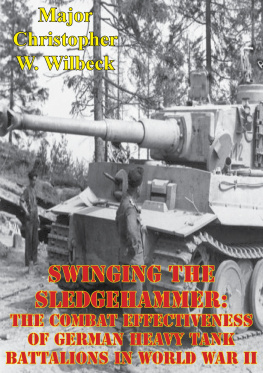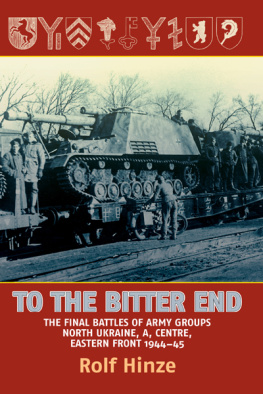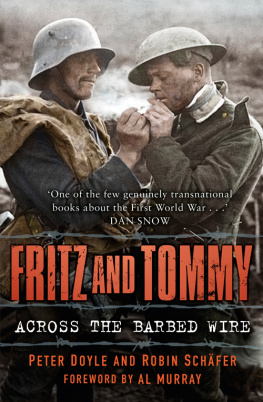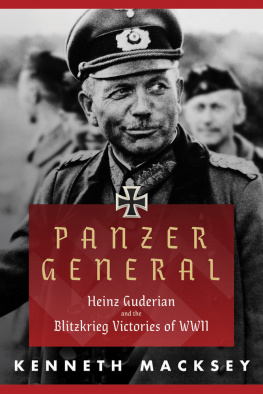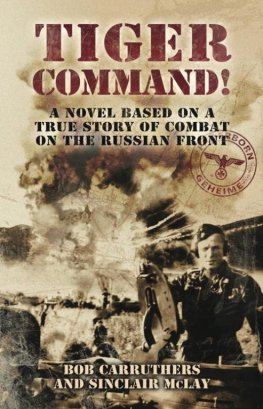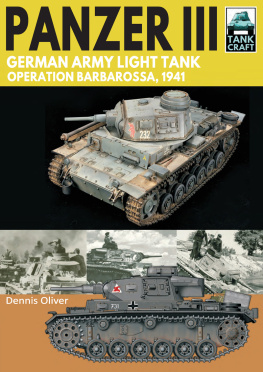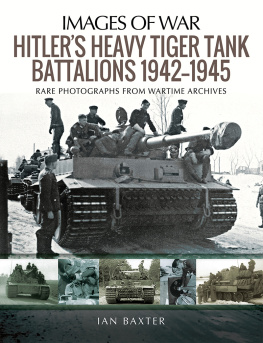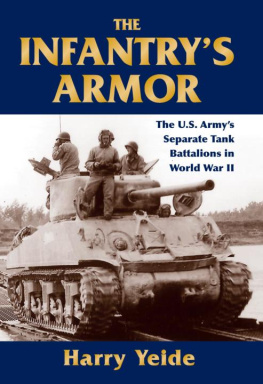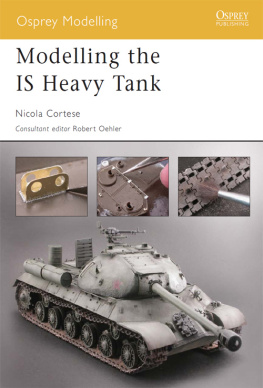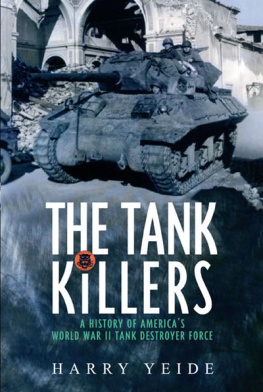

This edition is published by PICKLE PARTNERS PUBLISHINGwww.picklepartnerspublishing.com
To join our mailing list for new titles or for issues with our books picklepublishing@gmail.com
Or on Facebook
Text originally published in 2002 under the same title.
Pickle Partners Publishing 2014, all rights reserved. No part of this publication may be reproduced, stored in a retrieval system or transmitted by any means, electrical, mechanical or otherwise without the written permission of the copyright holder.
Publishers Note
Although in most cases we have retained the Authors original spelling and grammar to authentically reproduce the work of the Author and the original intent of such material, some additional notes and clarifications have been added for the modern readers benefit.
We have also made every effort to include all maps and illustrations of the original edition the limitations of formatting do not allow of including larger maps, we will upload as many of these maps as possible.
SWINGING THE SLEDGEHAMMER: THE COMBAT EFFECTIVENESS OF GERMAN HEAVY TANK BATTALIONS DURING WORLD WAR II
By
Major Christopher W. Wilbeck
TABLE OF CONTENTS
Contents
ABSTRACT
This thesis is a historical analysis of the combat effectiveness of the German schwere Panzer-Abteilung or Heavy Tank Battalions during World War II. During the course of World War II, the German Army developed heavy tank battalions to fulfill the concept of breaking through enemy defenses so faster, lighter mechanized forces could exploit the rupture. These heavy tank battalions had several different tables of organization, but were always centered around either the Tiger or the Tiger II tank. They fought in virtually every theater of Europe against every enemy of Germany. Ultimately, the German military created eleven Army and three Waffen-SS heavy tank battalions. Of the Army battalions, the German command fielded ten as independent battalions, which were allocated to Army Groups as needed. The German Army assigned the last heavy tank battalion as an organic unit of the elite Panzer Grenadier Division Grossdeutschland . The Waffen-SS allocated all of their battalions to a different Waffen-SS Corps.
Because these units were not fielded until late in 1942, they did not participate in Germanys major offensive operations that dominated the early part of World War II. Germanys strategic situation after mid-1943 forced their military onto the defensive. Consequently, there are very few instances when heavy tank battalions attacked as a breakthrough force. During the latter part of the war, they were used in many different ways to provide defensive assistance along very wide frontages. This study assesses the German heavy tank battalions as generally effective, primarily because of the high kill ratio they achieved. However, based upon observations from a wide variety of examples, this study also outlines several areas where changes may have increased their effectiveness.
ACKNOWLEDGMENT
I am grateful for the efforts of my committee as well as the faculty and staff at the U.S. Army Command and General Staff College. Thanks to my daughter, Abigail, for making me take many study breaks to talk to her and to let her play on the pewter. Thanks to my son, Jonathan, for unflinchingly taking over many of the household chores, freeing me to do research. Thanks to my wife for her support in tolerating my long hours of seclusion to finish this thesis. She maintained her sense of humor throughout and her encouragement was greatly appreciated. Finally, thanks to my parents for somehow instilling in me a thirst for knowledge, a hunger for education, and a passion for history.
TABLES AND ILLUSTRATIONS
Table
1.Tiger I Specifications
2.Tiger II Specifications
3.Tiger I and Tiger II Gun Comparison
4.Tank Kill Ratio Comparison
5.Tiger Losses
Figure
1.Heavy Tank Company, K.St.N. 1176d, dated 15 December 1942
2.Heavy Tank Battalion, D Organization: 1942-1943
3.Heavy Tank Company, K.St.N. 1176e, dated 5 March 1943
4.Heavy Tank Battalion, E Organization: 5 March 1943
5.Heavy Tank Battalions in Tunisia
6.S.Pz.-Abt. 503 with Army Group Don
7.S.Pz.-Abt. 503Operation CITADEL
8.S.Pz.-Abt. 505Operation CITADEL
9.Heavy Tank Regiment BakeCherkassy.
10.S.Pz.-Abt. 508 at Anzio
11.Heavy Tank Battalions during Operation BAGRATION
12.Heavy Tank Battalions in Operation SOUTHWIND
13.Heavy Tank Battalions in Operation SPRING AWAKENING.
14.The Sandomierz Bridgehead and the Destruction of s.Pz.-Abt. 501
CHAPTER 1 INTRODUCTION
The only instrument of armored warfare which German commanders regarded as qualitatively different from the rest was the Mark VI Tiger, which was not allotted to divisions but organized in independent battalions, kept under central control, and committed to crucial offensive and counter-offensive missions. John Keegan, The Second World War
The German Tiger and Tiger II tanks were legends in their own time. They were arguably the most feared weapon developed by the Germans. The men who commanded these tanks accomplished extraordinary feats. This thesis analyzes the combat effectiveness of the German schwere Panzer-Abteilung (s.Pz-Abt.), or heavy tank battalions. This thesis shows that although they were rarely used in the role for which they were originally conceived, that of breaking through prepared enemy defenses, these units were effective in the offense and defense in destroying enemy tanks. However, results varied between different battalions and leaders could have increased the heavy tank battalions effectiveness with better doctrine and employment. The analysis includes the performance of doctrinal and assigned missions from both the Western and Eastern Fronts, and it considers doctrine, force structure, equipment, leadership, and personnel.
Although there is a great wealth of information available on many aspects of the heavy tank battalions, no literature exists to answer whether these units were viable forces that achieved the doctrinal mission for which they were conceived. Also, no scholar has looked into whether they were able to accomplish the missions assigned to them while the German Army was on the defensive; counterattacking, reinforcing other units in the defense, or as a mobile reserve. This thesis fills that void by studying unit histories and engagements from all perspectives while looking at the different organizations developed, types of equipment, and missions of the heavy tank battalions.
Background
After World War I, the armies of the world wrestled with the lessons learned during that war. They tried to come up with solutions for overcoming the linear, stalemated war of World War I. The objective was to go beyond positional, attrition warfare and return to a war of maneuver. In order to do this, a breakthrough of the enemys defenses had to be attained. Many military theorists tried to conceive a doctrine to rupture and exploit the enemy defensive line. Great Britain, Germany, and Russia all published material in their professional military journals that put forth the idea of attacking in waves of tanks. In these theories, the lead wave consisted of the heavy tanks and the follow-on waves were lighter, faster tanks that exploited the breach. Although the German Army planned for heavy tanks and development of the Durchbruchswagen (breakthrough tank) began in 1937, no heavy tanks were fielded before World War II began.
Next page
